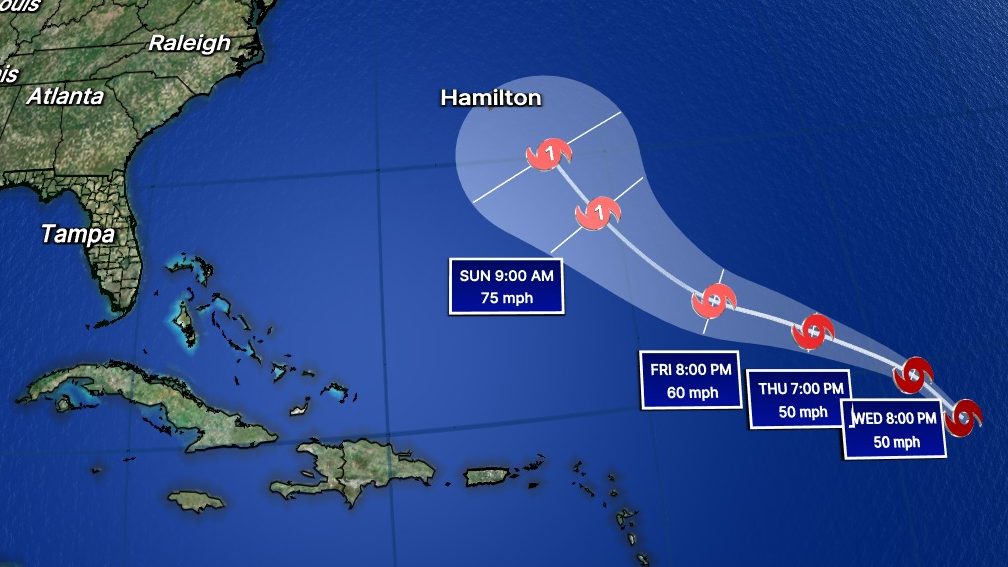Gabrielle Seems to Be Turning Away, But Don’t Wait to Prepare Your Roof

Storm watchers and meteorologists have been keeping a close eye on Tropical Storm Gabrielle (or the disturbance likely to become Gabrielle). Current forecasts increasingly suggest that its path may curve northward and spare much of the U.S. coastline from direct landfall. While that’s good news, it’s not a guarantee, and there’s still time (and reason) to act now to protect your roof and your home. Here’s what you need to know, and what steps to take.
What the Forecasts Are Saying
- The system for Gabrielle is currently a tropical wave (or disturbance) over the Atlantic, likely to develop further in the coming days.
- Forecasts indicate gradual development, with some models showing the storm strengthening. Timing and strength will influence its eventual path.
- One scenario: If the storm organizes quickly, it could be pulled northward earlier, turning away from the U.S. coast. A slower development could push it more west toward the Caribbean or U.S. Southeast before any turn.
- As of now, there is no immediate threat, but the risk is not zero, especially for coastal or near-coastal areas.
So, while things are trending toward a more favorable path (i.e. away from a direct hit), the window for preparation is now, because things can change quickly.
Why You Shouldn’t Delay Roof Prep
Even if Gabrielle doesn’t hit directly, storms bring heavy rain, strong winds, and flying debris, all of which test roofs. Many roof damages happen not in a perfect hurricane, but in smaller storms, or when marginal weak points are exploited in high winds. Preparing now reduces risk in all scenarios. Some benefits:
- Rain often exploits small vulnerabilities, acting now could prevent leaks and interior water damage.
- Avoid wind damage. Roofing materials that are loose or in need of maintenance can be ripped off.
- Protect the structure and insulation. Water infiltration or structural damage under storms can lead to mold, rot, or more costly repairs.
- Insurance and financial savings. Claims are easier to file when you have pre-storm documentation. Minimizing damage also saves you money.
What If You’re Further Inland?
Even if you’re not on the coast, you still need to prepare. Storms can bring wind damage, heavy rainfall, flash flooding, and even tornadoes inland. A good roof protects not just from direct hits but from water intrusion, debris, and connected structural damage. Also, high rainfall can stress gutters, downspouts, and roof drainage systems inland. So the same prep checklist mostly applies everywhere.
What to Watch in the Coming Days
- Storm organization: If Gabrielle strengthens faster than expected, there’s a higher chance its path shifts more west before curving, which could bring more risk to the U.S. Southeast or Caribbean.
- Guidance from the National Hurricane Center (NHC) or local meteorological agencies. They will update watches, warnings, and projected paths.
- Local weather forecasts: rainfall forecasts, wind advisories, storm surge for coastal areas.
- Emergency resources: contractors, roofing services, supply stores (tarps, nails, sealants) may become busy or booked if a storm seems imminent, better to line them up beforehand.
Conclusion
In short: Right now, the odds are moving toward Gabrielle curving away from the U.S. coastline, that’s the best-case scenario. But weather is not certain, and storms have surprised us before. Roofs are among the most critical parts of your home in a storm, yet they’re often neglected until it’s too late.
Now is the time to inspect, repair, and reinforce before weather conditions worsen, materials get scarce, or contractors get booked up. Even if Gabrielle passes without making landfall, your roof will be much better off for having prepared.
Stay safe, stay alert, and when it comes to your roof, don’t wait.
